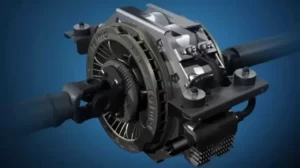
What Is Deadhead Trucking – How to Reduce It
Although it has a trailer attached, a deadhead truck is empty. Driving a cargo truck (semi-truck) while towing an empty trailer is known as deadheading.
A deadhead truck tows a trailer but does not transport cargo. Driving a cargo truck (semi-truck) while towing an empty trailer is known as deadheading. When a trucker brings the empty cargo container back to its starting point or backhauls it, this practice is known as deadheading. Be careful not to confuse “deadheading” with “bobtailing,” which happens when driving a cargo carrying truck without a trailer attached.
What is Deadhead?
When a trucker tows an empty trailer, they are said to be deadheading. Deadheading is frequently required to move on to the next load because finding loads isn’t always simple.
Does a Trucking Company Pay for Deadhead Miles?
Deadhead miles are the distances that truckers travel without a load. When driving without cargo, truckers frequently lose money. Unfortunately, despite being empty, these miles still use up fuel and harm trucks.
For deadhead miles, trucking companies typically don’t pay. After the first 100 miles, some might pay for deadhead mileage as a reward, though it isn’t frequently necessary. Owner-operators frequently end up paying the expenses out of pocket, whereas company drivers may occasionally receive compensation of between $0.60 and $0.90 for deadhead miles.
Why is Deadhead Trucking Dangerous?
Already, there are many difficulties for truckers on the roads, many of which are caused by bad weather. Truckers need to take extra precautions to avoid accidents, whether there are strong winds or black ice. Unfortunately, bad weather and busy roads are frequently unavoidable.
Accidents involving deadhead tractors are frequent. Their trailer is exposed to the elements when truckers deadhead without cargo. It can be challenging to control the entire truck when a trailer is swaying or flipping open. Deadheading truckers have the potential to cause accidents that result in serious injuries if they are not careful.
Before accepting a job that calls for driving without a load, truckers must always make sure to check the local weather forecast and wind speed.
What Are the Drawbacks of Deadheading?
Because you aren’t transporting a load from point A to point B, even though you are driving, you aren’t technically earning any money for your employer. Not all trucking companies pay for deadheading, but some do. While you may still be paid for your time, it’s typically a fraction of the money you would be making if you were hauling freight. Drivers at Swift Transportation, for instance, receive about $1.07 and $0.80 respectively for each mile of deadheading, while CR England does the same.
This can be especially difficult if you run your own business as an independent owner-operator since no one will fill in for you. Either way, for little to no financial gain, you are putting a lot of miles on your truck, using up diesel, and wearing down your tires.
Deadheading can also be risky. Trailers that are empty weigh only half as much as ones that are loaded, making them more difficult to maneuver. It is best to make sure your trailer is loaded as frequently as you can because this may become a problem if you are driving in strong winds.
How Can I Avoid Deadhead?
Making sure your trailer is rarely or never empty is the obvious solution, but you know what they say—it’s easier said than done. Well, what if you could get real-time load matching opportunities pushed straight to your smartphone? That’s where GoLoad comes in.
GoLoad uses the power of the mobile cloud ecosystem and GPS data to assist drivers in streamlining their drives and maximizing the value of their routes. It was created to reduce waste, increase profitability, and assist drivers in improving their lives through technology. GoLoad is integrated with the My20 ELD to make things simple for you, allowing you to monitor your HOS and receive load opportunities in the same location.
How Can Truckers Can Limit Deadheading
Reduce the number of empty deadhead miles between loads if you’re a trucker who doesn’t get paid for those miles. The majority of truckers will do anything to increase their earnings and decrease deadhead miles that reduce their profits as the national average fuel prices skyrocket.
Truckers can limit deadheading by:
- Checking deadhead mileage on jobs: Check to see if a broker or shipper charges deadhead mileage for the work. If they don’t, consider the costs you might endure.
- Looking for loads requiring return materials: You can search for a nearby broker to see if there are any open positions if your broker doesn’t have a return trip. This is particularly helpful when truckers want to keep their loads down during the winter and in windy conditions.
- Using load boards: Load boards are convenient online job boards connecting carriers to shippers. On their routes and to other places, truckers can find freight that is available.
- Planning trips in advance: With load boards, you can easily plan your journey in advance to cut down on deadhead miles and boost your income.
How to Limit Trucking Deadhead
You will typically make more money if you haul cargo more frequently. It’s a simple concept. A trucker must maintain a full load and avoid returning empty in order to maximize profits. Driving on empty can cost owner operators money, with the national average diesel price for 2017 predicted to be $2.71 per gallon (by Gas Buddy). At that cost, a 200-mile deadhead in a Peterbilt or Mack truck with an average fuel efficiency of 5 mpg could cost more than $100, decreasing the potential profit a driver could make. If there are no nearby loads, deadheading might be your only option.

What is Deadhead in Trucking: Backhaul Vs. Headhaul
Backhaul, headhaul, and deadhead are not the same. Truck drivers who headhaul loads to their destinations; those who backhaul loads on the same route. In essence, a headhaul is a trip from route A to route B, whereas a backhaul is a trip from route B to route A.
Deadheading may be decreased with the aid of hauls. When a driver makes a headhaul to a location, they almost certainly will be deadheading from the drop-off location to pick up the next load.
The truck won’t be empty while you negotiate a backhaul contract. For shippers, who may be able to get cheaper transport rates, this option can be a great deal. After reaching their headhaul destination, carriers are limited in their options.
So that the truck doesn’t have to deadhead, a backhaul provides them with some cargo at a bargained-for price.
You may be familiar with the term “DH-O,” but what does it mean in the context of trucking? DH-O stands for “dead head origin” and is a logistics technology feature that allows drivers to find cargo loads within a certain distance of their current location.
A driver may occasionally need to “deadhead” from the location where they delivered a load to pick up another one. The driver can look for loads within a certain distance from their point of origin by setting their DH-O to their desired distance.
As an illustration, if the driver’s point of origin is Atlanta and they set their DH-O to 80, they will only see loads that are within 80 miles of Atlanta that they can pick up. Drivers can more easily regulate the distance they travel between cargo loads thanks to this feature.
How to Strategize Deadhead Trucking?
The negative impact of “empty miles” on both drivers and carriers is a common complaint in the trucking industry. The resulting fuel emissions are essentially wasted when a truck travels without a loaded trailer or shipping container. The container process frequently requires it despite its inefficiency.
There are now technological solutions available that are designed to remove that efficiency bottleneck. For the purpose of connecting empty containers at warehouses with businesses that require containers for exports, fleet owners can use digital storefronts or mobile services that are app-based. As a result, the container can be delivered to a nearby warehouse, filled with goods for export, and then brought back to the port completely loaded. Fleet operators can improve efficiency and reduce unnecessary carbon emissions by using technology to facilitate these transactions, also known as “street turns.”
For a variety of sustainability challenges, software solutions are now available. Everything from lowering empty miles and utilizing capacity data to tracking specific containers and improving drivers’ daily schedule planning. Route planning is one of the features that fleet management programs like LocoNav offer, and it can greatly reduce the amount of deadhead miles. In other words, a human dispatcher might not be able to streamline these procedures as quickly, precisely, or wisely as a computer algorithm.
FAQs
How Deadhead is Different from Bobtail?
An unattached trailer-less truck tractor is known as a bobtail. This typically occurs when a trucker is in a trailer at one location and then moves to another location to pick up another trailer. Deadheading happens when a trucker is now towing an empty connected trailer after having unloaded his load.
How Much Are Truckers Paid for Deadheading?
Deadheading is paid for in some trucking operations while it is not in others. While you may still be compensated for your time, it is usually a fraction of what you would earn if you were hauling cargo.
Do Truckers Who Deadhead Run Any Risks?
It is risky to drive a truck that is empty. That fact might not immediately come to mind when thinking about driving your vehicle without a load. However, empty trailers are only half as big as full ones. You run the risk of your trailer tossing over if you’re driving an empty trailer in a high-wind area. Both possibilities carry risk. Always check the weather and wind conditions before driving with an empty trailer.



Average Rating